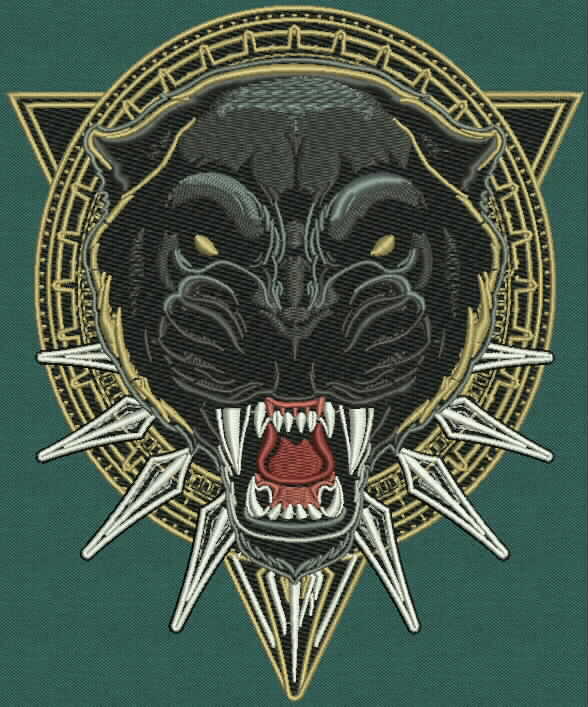Reliable Digitizing for Embroidery: Quick Turnaround
Reliable Digitizing for Embroidery: Quick Turnaround
Blog Article
Simplifying the Art of Needlework Digitizing: Step-by-Step Overview
As technology proceeds to development, the digitization procedure has actually ended up being more obtainable, enabling enthusiasts to bring their detailed styles to life with convenience. In this guide, we will certainly decipher the intricacies of embroidery digitizing, breaking down each action systematically to simplify the process and encourage both beginners and skilled embroiderers alike.
Understanding Needlework Digitizing Software
Embroidery digitizing software program works as an essential device for transforming elaborate layouts into digital layouts suitable with embroidery equipments, assisting in specific sewing and modification. This customized software permits customers to import different photo data formats, such as JPG or PNG, and convert them right into needlework machine-readable styles like DST, EXP, or PES - Digitizing for Embroidery. By making use of features like stitch editing and enhancing, padding choices, and string color option, digitizing software application makes it possible for customers to control every aspect of the style process
Furthermore, progressed embroidery digitizing software provides tools for producing complicated styles, readjusting stitch thickness, and integrating detailed details. Users can likewise preview the design before stitching it out, guaranteeing precision and reducing errors. Additionally, numerous software application supply automatic functions that assist enhance the digitizing procedure, conserving effort and time.
Comprehending the abilities of embroidery digitizing software is vital for accomplishing top notch lead to needlework jobs. By grasping this tool, embroidery fanatics and specialists can unleash their creativity and bring complex styles to life with precision and efficiency.

Selecting the Right Design File
After familiarizing yourself with the abilities of embroidery digitizing software, the next crucial action in the procedure is choosing the ideal style declare your job. Digitizing for Embroidery. When selecting a design declare needlework digitizing, it's important to take into consideration the complexity of the design, the dimension of the end product, and the kind of fabric you will certainly be dealing with
For elaborate designs with great information, a high-resolution picture or vector file is recommended to ensure that the needlework device can accurately duplicate the style. Furthermore, the size of the end product plays a substantial function in selecting the appropriate style file. Bigger designs might call for higher resolution documents to preserve clarity and intensity.
Moreover, the kind of textile you will certainly be stitching on affects the selection of design data. Various fabrics might call for modifications in the layout file to make sure that the stitches are properly lined up and the layout shows up as intended. By very carefully picking the best style data based upon these variables, you can set yourself up for a successful needlework digitizing procedure.
Digitizing Devices and Methods
Utilizing specialized software program and precision strategies, digitizing tools are essential in transforming elaborate layouts right into embroidery-ready documents. Needlework digitizing software, such as Wilcom, Hatch, or Embrilliance, offers the required platform to transform artwork right into stitch information. These programs use functions like stitch editing and enhancing, padding alternatives, and text devices to ensure the layout translates perfectly onto material.
One of the essential techniques in digitizing is creating a clear path for the embroidery machine to follow. This includes digitizing each aspect of the style with precision, identifying stitch types, thickness, and instructions. By making use of devices like digitizing tablets or software-specific plugins, embroiderers can accomplish a high level of accuracy in their digitized layouts.
Furthermore, understanding the art of Go Here padding sewing is important for creating high quality embroidery. Underlay stitching stabilizes the textile and develops a foundation for the design, ensuring that the end product is both aesthetically attractive and lasting. By understanding these digitizing devices and methods, embroiderers can raise their craft and bring intricate layouts to life with accuracy and efficiency.
Personalizing Stitch Types and Instructions
Having actually established a structure in digitizing tools and techniques, a vital element in advancing needlework craftsmanship lies in personalizing stitch types and directions with accuracy and purpose. The option of stitch types can significantly influence the overall appearance and structure of the embroidered layout. Satin stitches, known for their smooth and glossy finish, job well for creating borders and text. On the various other hand, fill stitches are suitable for covering larger locations efficiently. By tactically combining these stitch kinds, embroiderers can achieve deepness and dimension in their layouts.
In addition, the direction of stitches plays a vital duty in boosting the aesthetic allure of the last needlework. By trying out with various stitch angles and patterns, embroiderers can bring their styles to life with exceptional information and ins and out.
Screening and Refining Your Digitized Style
To make sure the precision and high quality of your digitized layout, detailed screening and refinement are essential action in the needlework digitizing procedure. When you have completed look at this web-site the digitization of your design, it is essential to evaluate it before continuing with the real embroidery. Evaluating allows you to identify any kind of prospective issues such as string breaks, sew density problems, or layout distortions that might affect the result.

After screening, it is very important to improve your digitized style based on the feedback from the examination sew-out. This may involve tweaking sew setups, adjusting densities, or making adjustments to the general style to achieve the wanted result. By iterating via testing and refinement, you can fine-tune your digitized design to excellence prior look at here now to moving onward with the real embroidery procedure.
Final Thought
Finally, mastering the art of needlework digitizing needs an extensive understanding of the software, picking the best design data, utilizing digitizing devices and techniques, tailoring stitch types and directions, and screening and refining the digitized layout. By following these actions, embroiderers can simplify the digitizing procedure and create top notch stitched styles with accuracy and effectiveness.
Report this page